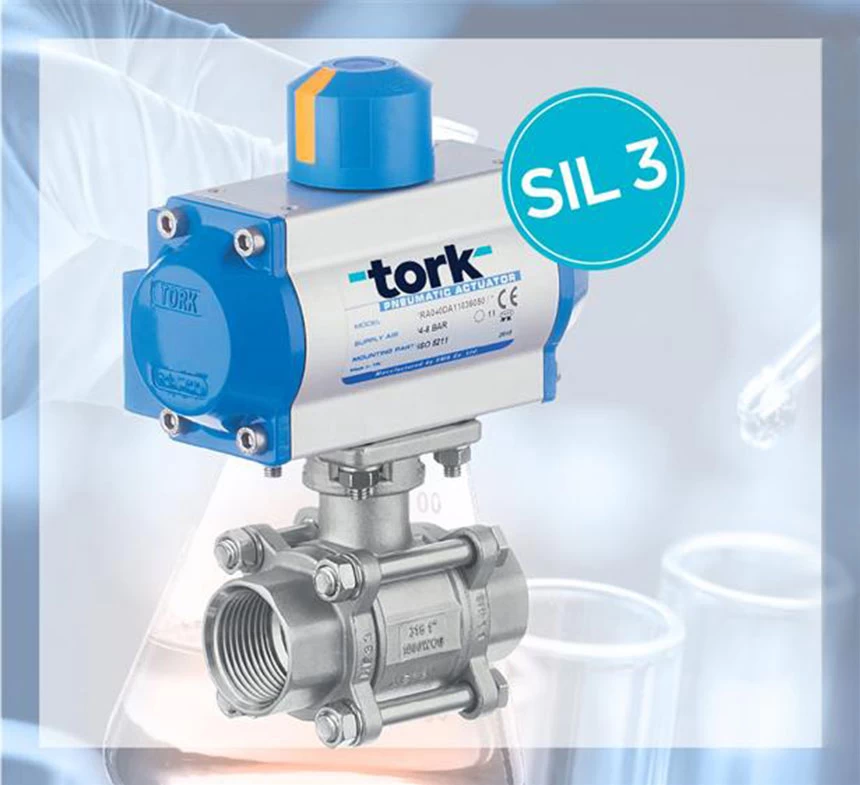In the chemical industry, where there are aggressive fluids such as acid, Ball valve and Butterfly valve groups are generally preferred. These valves are preferred in the industry according to the fluid and the type of connection.
1. Ball Valve
Stainless steel ball valves are generally preferred in chemical plants. Especially in environments where aggressive fluids such as solvents are used, stainless ball valves are used.
Another material used in ball valves in the chemical industry is PVC ball valves. Especially in acid lines, PVC ball valves are used in lines where extremely corrosive fluids pass.
Conditions to Consider When Choosing a Ball Valve
The most important issue in choosing a ball valve
Type of fluid,
The standards required by the place to be used,
Connectivity features,
Temperature and
Pressure information.
With this information, you can choose the most suitable ball valve for your fluid.
The cleanliness of the fluid passing through the ball valves is very important. If there are hard particles such as various dusts, dirt and sand in your fluid, these will surround the sphere over time and render your valve inoperable after a while. The dusty fluid flowing over time covers the sphere inside the valve, and at the same time causes the Teflon gaskets used as sealing and guiding material to be scratched. Ball valves cannot open and close properly when Teflon gaskets are scratched and the sphere is covered with dust. In such cases, our service team can perform the necessary maintenance for your valve and ensure that your valve works properly again.
2.Butterfly Valve
Another preferred type of valve in actuators is butterfly valves.
Butterfly Valve Application Areas
Butterfly valves are mostly used in applications such as waste water treatment plants and building installations. Butterfly valves with Teflon disc and seal material are preferred according to fluid types in chemical plants. In this way, the control of extremely aggressive fluids is ensured.
Butterfly valves are preferred in places that do not require a very long distance between 2 flanges and where more economical applications are sought than ball valves.
Advantages of Using a Butterfly Valve
The biggest advantage of the butterfly valve is that, unlike the ball valve, it can pass particulate and dusty fluids a little more easily. However, due to the presence of a damper in the middle, wear will occur in butterfly valves, as in ball valves, over time. At the same time, the damper in the middle will cause pressure and flow losses even. However, since the ball valves are full-through valves, they are the valves that minimize the flow and flow loss.
Considerations When Choosing an Actuated Valve
The choice of valve suitable for your actuator varies according to the characteristics of the line to be applied and the place where the product will be used. In order to make the right combination, first of all, it is necessary to choose the product suitable for the process conditions.
There are shafts under the actuators. The shaft of your ball valve must be compatible with the shaft of your actuator.
Another important point is that the hole diameters in the top flange of the ball valve match the hole diameters of your actuator. When manufactured in ISO standards, the top flange of the ball valve, which is produced in ISO standards, can be mounted under many actuators. What happens if it's not plugged in? A spacer is placed between the ball valve and the actuator. With this connecting piece, you can mount your actuator to your valve.
Safety standards required by the facility should be considered in the selection of actuator, directional valve, switch box or positioner. ATEX certified products should be preferred for explosive flammable environment safety, especially in chemical plants. In addition, SIL certificate is sought according to the degree of safety in the process equipment used in the facilities covered by SEVESSO. Tork pneumatic actuators are SIL3 certified and ATEX certified. At the same time, all our stainless ball valves have ATEX certificate. Atex and SIL certificated switch box, directional valve and positioner products are also available in our product group according to your demands.


